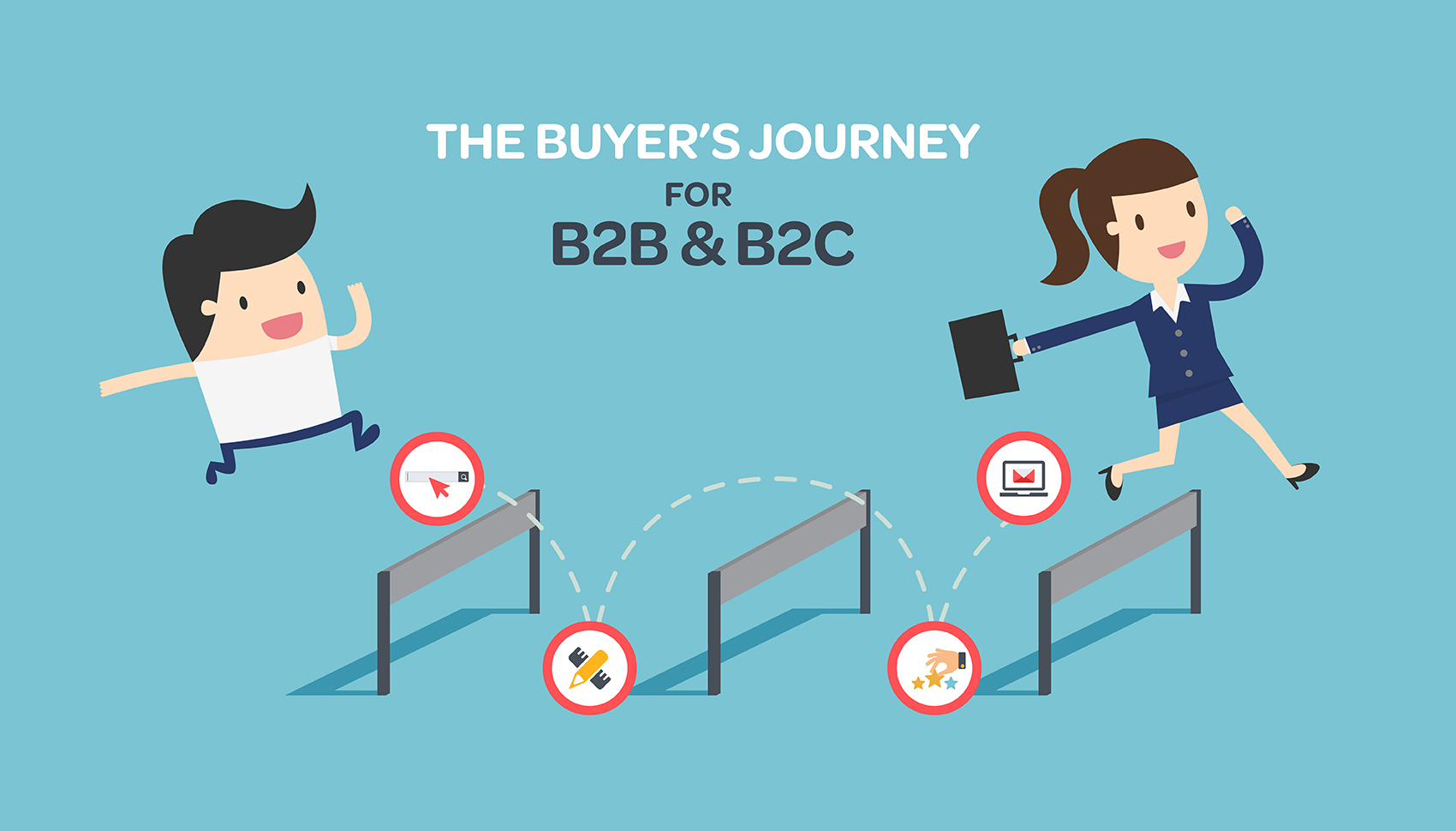A great whitepaper from BigData and MarketingPro as well as other recent research has piqued our interest on this question. We have already established in previous posts the importance that businesses – particularly B2C businesses – are placing on the customer experience (CX). The questions now become; how well are we as marketers accounting for this experience, and whether or not B2B is next to follow in the footsteps of our B2C counterparts.
How will the way we implement CX in the buyers’ journey differ from B2C, if at all?
The buyers’ journey continues to shift and change thanks to the progression of digital transformation. Customers looking to buy products can access information and review brands across a number of digital platforms including social. Consumer products are in a sense voted for, using social follows and are rated (sometimes in great detail) by reviews. All of this allows savant customers to become better informed.
Research does suggest that enterprise buyers in the B2B world are also beginning to mimic consumer-buying behaviours. In-step with the current trend, the CX or customer experience is also beginning to hold more weight and importance than cost in the buying process.
“More than half (61 per cent) of buyers consult third-party sources before consulting a company’s Salesforce. These sources include third-party sites, feedback from a business partner, social channels and conversations with peers who already have experience with the product or service. These sources beyond the reach of a company’s Salesforce are a factor for 89 per cent of buyers when making B2B buying decisions.”
This is a significant development in influencing brand perception and buyer behavior.
Convergence of marketing techniques
When you think about the new ways traditional B2B customers are using digital information (much the same as B2C), it becomes clear that the convergence of B2B and B2C marketing techniques are almost a necessity. Both sides now need to look for the best ways to optimise how they connect with customers. As the behaviours become much the same, so to should the marketing techniques. Below is an excellent visual representation, showing the convergent crossover points between traditional B2B and B2C marketing.

Information originally published by GoodData for Marketing Profs.
The automation of sales and processes
Like our B2C counterparts, this same study shows that investments into streamlining processes and technology are also changing with the clear intent on optimising the customer experience. The top 3 areas in spending include: sales and support technology, investment in people, training and service interactions and sales automation technology.
The social B2B buyer
Decision-makers are using social. The importance of social media is further highlighted for B2B as an important touch point along the road of the customer journey.
“Just as there is a new breed of consumers known as the ‘connected consumer’ who relies heavily on digital and social technologies, there is a group of ‘heavy social media users’ in B2B, known as the ‘Social B2B buyer”. [Source, i-Scoop]
The main point to remember here is that your B2B buyers are consumers too. Research indicates that the B2B buyer is a ‘young executive with clout’ predominantly in the 18 - 34 age range.
In the B2B world, successful social focuses more on communities that are industry as well as network building through associations and personal connections. Brand and emotion are bigger players here in this social landscape. Make sure your B2B marketing team knows how to express your brand truth and does social successfully.
Quality experiences
The customer experience has actual monetary value for business.
In fact, our research reveals that purchasing decision makers, similar to consumers, are paying more for products and services in the name of a better customer experience. In the last six months, 56 per cent of purchasing decision makers within companies report paying more for a product or service because the customer experience was better than other, less expensive options. (Source, Avanade Study)
This has huge implications. Enhancing the end-to-end experience of your customers whether B2B or B2C clearly matters.
So how can B2B organisations deliver a CX that will generate benefits for their customers and most importantly improve their bottom line?
This is certainly a question worthy of reflection. B2Bs need to be able to deliver a customer experience that is dual and total. This means that both the needs and the priorities of buyers, as well as the needs and priorities of those customers who will actually use the product or service must be targeted, identified and delivered to satisfaction.
Think it could be time to review the customer journey of your B2B, non-profit or SME organisation? Get in touch with the experienced team at Make it Happen and let’s talk challenges.

